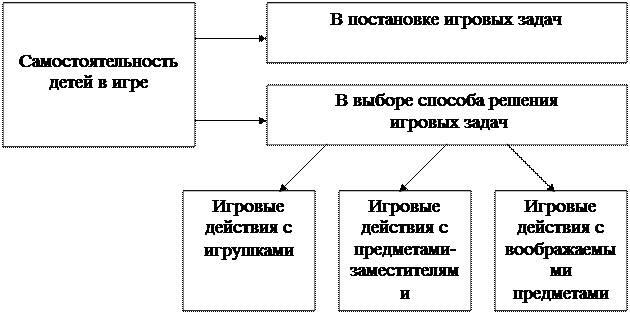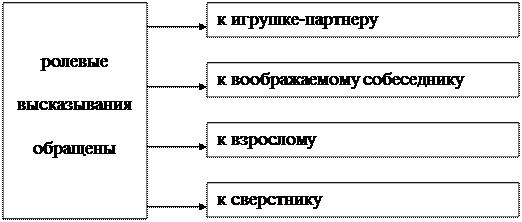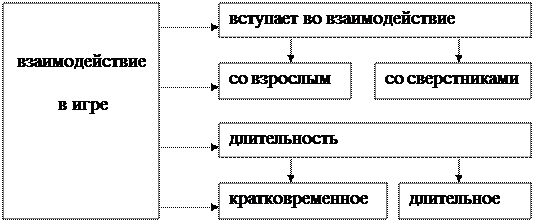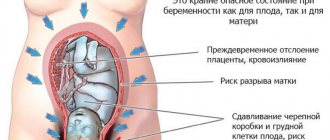Spider in the web
A child at this age enjoys facing new challenges. Make a web for your little spider and watch him try to get out of the maze.
What you will need:
- Skein of colored yarn
- Large room with furniture
- Clear tape
Skills to be learned:
- Eye/hand coordination
- Fine and gross motor skills
- Problem solving
- Take a skein of colored yarn and attach one end to some furniture on one side of the room at a height suitable for the child.
- Unroll the skein as you move around the room and tape the yarn to furniture or walls in places. Don't make your web too high.
- When you unwind the yarn around the room, cut off a piece of it with a reserve.
- Pull the end of the yarn outside the room to lure the child into the room with the web.
- Invite your child to take the end of the thread and walk along it.
Game options. Tie small toys to the string so your child can collect them as they move along the web.
Safety. Be sure to keep an eye on your baby so that he doesn’t get tangled in the threads.
Catch-up on all fours
Sometimes the child seems to go back in his development: despite the fact that he can already walk, he may prefer to get back on all fours. When this happens, get into the same position and play tag with him!
What you will need:
- Pillows, cushions, soft toys, blankets and other soft obstacles
- Plenty of floor space
Skills to be learned:
- Ability to cope with anxiety and fear
- Gross motor skills
- Problem solving
- Social interaction
- Place soft obstacles around the room for your child.
- Place your child on all fours on one side of the room.
- Get down on all fours behind him.
- Say: “I’ll catch you now!” - and start chasing the baby on all fours.
- Encourage him to crawl away from you.
- Continue the pursuit and watch as the child avoids obstacles in an attempt to escape from you.
- When he gets tired of playing, switch roles and let him catch you now!
Game options. Provide a safety island for your baby, such as a spread blanket, where you cannot catch him. When the child gets to this island, crawl away so that he can get out of it, and then start catching up again.
Safety. Don't frighten your child to keep the game fun.
HOW DOES CHILDREN'S PLAY DEVELOP?
INTRODUCTION
Play, the leading activity in preschool age, opens up wide opportunities for raising a child. But kindergarten teachers often face the question: how to lead creative games?
Methodological recommendations introduce readers to modern psychological and pedagogical research on the problem of play in preschoolers, conducted under the guidance of S.L. Novoselova (Research Institute of Preschool Education, Moscow).
The methodological recommendations examine the features of the development of children's play, starting from its very first stage - plot-based play and including the developed plot-role-playing game of older preschoolers. This is done taking into account the requirement put forward by A.N. Leontyev, who wrote that game management cannot be carried out without knowledge of the patterns of development of this activity.
Based on the characteristics of the game's development, management tasks are put forward. Currently, their identification is especially important, because Many programs appear in which management tasks are sometimes set without taking into account the patterns of development of gaming activity.
To implement the assigned tasks, a methodology for complex management of the game is proposed. It was first proposed by E.V. Zvorygina (Research Institute of Preschool Education, Moscow), who developed the specifics of its use at the stage of children’s plot-display play. The use of the integrated leadership methodology at the stage of role-playing game was studied by N.F. Komarova (N. Novgorod).
The methodological recommendations present the experience of pilot kindergarten No. 421 in Nizhny Novgorod (head N.V. Yakutskaya), in which the recommended methodology was successfully implemented.
HOW DOES CHILDREN'S PLAY DEVELOP?
The game develops gradually, step by step. At an early age, children develop plot-based play. This is a game in which children reflect well-known events in their surroundings, do not take on a role, and play individually. When the plot-display game is formed, the plot-role-playing game appears. It differs in that children take on the role of an adult, depict a wide variety of events, and prefer to play together with their peers.
In order for the game to develop gradually, having a positive impact on the development of each child, it must be skillfully managed. The guidance will be effective if the teacher relies on knowledge of the indicators of game development.
Let's consider the main indicators of the development of creative play.
1. The game has content, these are the events that children convey.
2. Any content in the game is displayed in different ways [1]. First, children master object-based methods, then role-playing ones.
3. A distinctive feature of games is the independence and creativity of children.
4. In play, children interact with each other.
Taking into account the above indicators, the features of plot-display and plot-role-playing games will be considered.
In order for the game to fully develop, the teacher must choose an effective leadership methodology. We recommend using a comprehensive game management methodology. It includes four interrelated components:
1. Familiarize children with their surroundings through active activities.
2. Enriching children's gaming experience.
3. Organization of the subject-game environment.
4. Activating communication between an adult and children in a game.
The methodological recommendations show the specifics of using the methodology for complex management of plot-based and plot-role-playing games.
ORIGINS OF CREATIVE PLAY IN EARLY CHILDHOOD
3.1. Features of the plot-display game and
management tasks.
Let's consider how the plot-display game develops in accordance with the previously identified indicators and determine the tasks of the management.
Game content
In games, children display only events that are well known to them; they happily feed dolls, put them to bed, bathe them, etc. Some educators consider this type of game content to be too primitive and teach children what they consider to be more complex plots, for example, going to the hairdresser or going to the hospital. At the same time, adults do not take into account the fact that a child playing according to the proposed plot may only mechanically repeat the memorized actions, because he has either never been to a hairdresser or visiting it did not arouse his interest or positive emotions.
What rich impressions children receive in the life around them, they display them in games. Kids live in different conditions, so the content of their games should be different. If there is a telephone at home, then in games the child will “call” someone; if he knows how adults care for animals, then this knowledge will certainly be reflected in the games. But, unfortunately, from an early age, educators teach children to play the same games, without taking into account the environment in which they live.
The task of the guide is to help children transfer knowledge about their surroundings into the game, teach them to set a variety of game tasks.
It is known that in games children reflect different aspects of the surrounding reality. In plot-based games, children learn the purpose and properties of objects: they feed a doll from a plate, they roll a car or transport loads in it, etc. Educators do not always take into account this motive that encourages children to play, and often teach children to display the work actions of adults in games, for example, a doctor sets a thermometer, listens to a patient, etc. It's too early to do this.
The purpose of the manual is to help children learn the purpose and properties of objects in games.
Children's independence in play
If you do not immediately begin to develop children’s independence in play, then later this will be difficult and sometimes impossible. But teachers who manage the game often abuse direct methods; they indicate what needs to be done in the game, for example, they address them: “Feed the doll,” “Walk with the dog,” etc. Such guidance does not develop independence in children.
How can children be independent? In a plot-based game, they can already independently set game tasks and choose any objective method of solving them: some will prefer only toys, other children will supplement them with substitute objects, imaginary objects.

The task of the leadership is to develop in children the desire to independently set a variety of game problems and choose any objective methods for solving them.
Children's interaction in play
In plot-based play, children do not yet interact with each other; the game is individual in nature. Each child sets a game problem for himself and solves it himself. But children gradually develop an interest in the games of their peers, and it needs to be supported.
The task of the leadership is to arouse in children sympathy for their playing peers, to teach them to play without interfering with each other.
Game content
With the enrichment of life experience, children's play plans become more interesting and varied. In children's games, real, fairy-tale, and fantastic events are intricately intertwined. The number of gaming tasks that children set is increasing.
The task of the leadership: by enriching life experience, to promote the emergence of various ideas in children.
One of the features of role-playing games is that children assume the role of adults. Therefore, children are interested in aspects of the surrounding reality that are different from those in the plot-display game. First, children are interested in the actions that adults perform, and then in the relationships and communication of people.
The task of the leadership is to encourage children to take on the roles of adults, to display in games first the actions of people, then relationships.
Display methods for children
Ambient in the game
In role-playing games, children have well-developed objective methods for solving game problems. Play activities with toys are becoming more and more diverse. If children cannot find the right toy to solve a game problem or they need some unusual object in the game, then they easily use substitute objects. Moreover, both familiar and new objects can be taken as substitutes. As necessary, children include imaginary objects in games, and sometimes they replace missing objects or uncompleted actions with words. Thus, in role-playing games, children easily vary the objective methods of solving game problems mastered at the previous stage of game development.
The task of the management is to improve children’s objective ways of solving game problems.
An important change is that in the plot-role-playing game the formation of new - role-playing ways of displaying the environment. They need to be formed from the moment children begin to accept the role and actively declare it.
Role-playing methods include:
a) various, emotionally expressive movements, gestures, facial expressions;
b) role statements;
c) role-playing conversation.
At the initial stage of role-playing games, role-playing actions and statements are formed in children; in developed role-playing games, role-playing conversations increasingly appear instead of role-playing statements. Let's consider how role-playing methods of solving game problems develop.
Role-playing activities can be both varied and monotonous, it depends on the children’s impressions of the activities of the person whose role they are playing. Children gain knowledge about the work of adults on excursions, while reading children's literature, etc. In no case should preschoolers be specifically taught certain role-playing actions that correspond to certain roles - doctor, salesman, etc. Unfortunately, in practice this still occurs error.
However, the teacher’s attention should not only be focused on the variety of actions. Children need to develop emotional expressiveness of movement, gestures, and facial expressions.

Role-playing actions in games are accompanied by role-playing statements, with the help of which the child addresses a toy partner, an imaginary interlocutor, an adult, or a peer.
Gradually, children move from role-playing statements to conversation. It differs in that the players exchange phrases that are logically related in content. First, role-playing conversation occurs on the initiative of an adult. Having gained experience in communication, children engage in role-playing conversations with each other. With the enrichment of children's life experiences, the conversation becomes more varied and longer. But in practice there is such a disastrous tendency: the older children become, the less they talk in the game or their communication remains at a primitive level. The reason for this is that children sometimes do not know what to talk about, so during the formation of a role-playing conversation, it is imperative to demonstrate the interaction and communication of adults.
|
So, role-playing game differs in that children develop role-playing methods for solving game problems.
The task of the leadership is to form in children role-playing ways of displaying the environment: varied, emotionally expressive actions, role-playing statements and role-playing conversation.
Children's interaction in play
In role-playing games, children interact with adults and peers. This becomes possible because children learned to set game tasks independently. It is much more difficult for players to accept game tasks set by their peers. Children's inability to accept play tasks often leads to conflicts. In practice, educators strive to resolve children’s conflicts themselves, thereby not teaching children to independently negotiate in games. If the child is not interested in the assigned game task, he must be taught to tactfully refuse it without offending his peer. As the gaming experience increases, the duration of interaction increases. At first, the players enter into short-term interaction, then it becomes longer.
|
The task of the leadership is to encourage children to set gaming tasks for adults and peers, to teach those playing to accept gaming tasks or tactfully refuse them. Maintain long-term interaction between children in the game.
Independence and creativity of children in play
In role-playing games, children become more independent; they come up with what they will play, i.e. define the intention. To implement it, they independently set various game tasks. In practice, sometimes even in older groups, teachers turn to children with proposals: “Let’s play in ....”. This indicates that children did not develop independence even in early preschool age, which is why they need help, or that teachers do not set themselves the task of developing students’ independence in play.
In addition, children can independently choose subject and role-playing ways to display their surroundings in the game. They themselves select the necessary toys; if they need an item that is not there, they easily use substitute items or imaginary items to replace it. Traditional imagination based on plots, when all the game material, for example, for playing hospital, is concentrated in one place, does not contribute to the development of independence in children in choosing subject methods, because all toys are already prepared in advance.
Having accepted the role, the children themselves come up with, one can say on behalf of the person whose role they are playing, what means of expression to use in order to be like him, i.e. they independently choose role-playing ways to display the environment.
Children should be independent in choosing play partners.

Management tasks: to continue to develop children's independence in choosing a plan, in setting game tasks for its implementation, in choosing subject and role-playing methods for solving game problems. Teach children to independently negotiate with each other in the game.
Role-playing games are also called creative games, because This is where preschoolers’ creativity is most evident. Just like independence, creativity in children can be in choosing a plan and setting game tasks, in choosing ways to solve given game problems. But at the initial stage of choosing a role-playing game, creativity in children is manifested in the choice of only objective methods, because they are already well formed, and in a developed role-playing game - not only subject, but also role-playing.
Management tasks: to develop children's creativity in choosing a plan, setting game problems, and choosing subject and role-playing methods for solving them.
HOW TO PLAN MANAGEMENT OF A GAME?
The completeness of the development of the game, and, consequently, its educational value increases, provided that the teacher’s influence is planned. However, in practice, mistakes are often encountered in planning game management. Back in the 50s, R.I. Zhukovskaya, D.V., Mendzheritskaya, P.G. Samorukov pointed out the inaccessibility of planning: firstly, the themes of the games, and secondly, the game actions that children perform.
An analysis of plans for educational work indicates that these are the mistakes that educators make when planning how to manage games. As an example, here is a typical entry: “Organize a role-playing game in the hospital. Remember what a doctor does: listen to patients, set a thermometer, give medicine.” In this example, the theme of the game is indicated, and it is planned what the players will do. Thus, educators plan in advance to impose the theme of the game on children, and this leads to the suppression of independence and initiative.
Another significant mistake in game management planning is the lack of connection with the work of getting to know the environment. Educators do not always provide for the possibility of transferring the impressions children receive into play. This leads to children’s assimilation of formal knowledge (S.L. Novoselova).
What do you need to plan when managing the game?
It is recommended to plan: firstly, the tasks of managing the game; secondly, methodological techniques with the help of which the assigned tasks will be solved.
To determine the tasks of managing the game, you need to know well how the game is developed in each child. This helps to identify the diagnosis.
Experience shows that game management calendar plans should be drawn up for a short period of time, for 1-2 days, so that the teacher knows and takes into account the children’s play intentions when planning methodological techniques.
As examples, here are a few entries from the educational work plan.
— Teach children to set game tasks for each other. Find out where the boys went, offer to invite someone for a ride.
— Encourage expressive performance of the chosen role: “You are such a caring mother.”
— Include children in role-playing conversations. Ask the driver where we are going, where we are going, what is on the way, what happened to the engine, etc.
All examples given indicate management tasks and methodological techniques. The teacher can change the content of the techniques if the children have a different idea for the game.
In addition to the mandatory calendar plan, there may be a long-term plan. It is needed in order, firstly, to see the prospects for the development of the game over a certain time, and secondly, to establish a connection between familiarization with the environment and the further development of the content of the game.
A long-term plan can be developed using the four components of comprehensive game management. The basis is to familiarize children with their surroundings; depending on this, it is planned to enrich the children’s gaming experience, change the subject-play environment and intensify the teacher’s communication with children in the game. Approximate long-term plans are offered in the appendix.
APPLICATION
Game Analysis Questions
1. What is the theme of the game?
2. How does the idea of the game arise: independently or with the help of an adult?
3. The number of episodes displayed in the game, their variety.
4. Children’s independence when setting game tasks:
- an adult sets play tasks for children;
— an adult helps in setting game tasks;
— children set game tasks independently.
5. Formation of objective methods for solving game problems:
- a variety of play actions with toys;
- the presence of game actions with substitute objects, which substitutes are used and in what meaning;
- the presence of playful actions with imaginary objects.
6. Formation of role-playing methods for solving game problems:
- variety and emotional expressiveness of role-playing actions;
- with whom children enter into role-playing statements or conversation;
— meaningfulness of role statements and conversations.
7. Children’s independence in choosing subject and role-playing methods for solving game problems.
8. Children’s interaction in the game:
— with whom they interact;
— on whose initiative they enter into interaction (an adult, a peer, at their own request);
— duration of interaction.
9. Effectiveness of managing children's games.
10. Determine the tasks of managing the game.
Progress of observation
Educator: Children, who works in our group? (children list) M.I. and A.A. - educators, what is Vera Sergeevna doing? (children list). Today we will see how Vera Sergeevna prepares for lunch, we will have lunch soon. Even we will help her. Want to help?
Vera Sergeevna: What will I bring you lunch in? (children list). There are pots on the table. Which one should I get - big or small? Why is it better to take a large saucepan? There are many of you, we all need to feed Sveta, Natasha, and Dima. I'll take a big pot so there's enough soup for everyone. This is how big it is, look inside. The pan has 2 handles. Show where the handles are on the pan. Why pens? Lift the pan by the handles to make it easier to carry. What color is the pan? What does the pan have, why does it need a lid? What do you use to cook soup for dolls? Show me the pots you have. That's how small it is. What does the pan have? Does it look like a big saucepan? You can cook a delicious soup for your dolls in this saucepan. It's time for me to go to the kitchen for lunch. Help me carry the pan to the door.
NOTE No. 2
Progress of observation
Driver: Guys, do you want to know why my car drives so fast? Because I take care of her every day. Do you wash your face every day? So I wash my car every day. I pour water into a bucket, take a large brush and wash the doors and body (shows). And sometimes I spray the car with water from a hose, like this (shows with a gesture). I wipe the glass with a clean cloth. Why do you think it is necessary to wipe glass? If the windows are clean, then the road can be clearly seen through them (the driver can lift one of the children so that he can wipe the glass). Now I can see the road very well, thank you. The most important thing in a car is the engine. I also take care of the engine. If the engine works well, then the car drives well. I pour oil into the engine (shows). Cars must be looked after so that they drive well and do not break down: wipe, lubricate, wash. Do you have cars in your group? Do you look after them? And if the car breaks down, then I repair it. I take a wrench and use it to tighten all the screws (shows). I'll give you a wrench, you too will repair your cars. So today you learned how I take care of my car.
NOTE No. 3
Progress of observation
A subgroup of children comes to the doctor's office, they talk about different topics. There is a knock on the door, a girl enters the office: “Hello, Olga Nikolaevna, I have a sore throat.” The doctor turns to the children: “Sick Yulia came to me, wait a little, I need to treat her.”
Educator: “And we will listen to what you talk about.”
- Julia, open your mouth, I’ll look at your neck. You're probably stuck in a bad way
scarf when I went for a walk.
- No, I tied the scarf well, Denis helped me.
- Maybe you took snow in your mouth?
- Yes, I only tried a little.
— You can’t taste the snow, it’s very dirty and cold, that’s why you have
and my throat hurt. I'll give you some medicine, you can rinse it morning and evening.
- Aren’t you going to give me injections?
- No, I won’t give injections. Also tell your mom to cook for you.
warm tea with raspberry jam, it helps.
- Okay, I'll tell mom everything.
- Get well soon.
Educator: “You heard what Olga Nikolaevna was talking about with Yulia: she found out from Yulia what was hurting, found out why her throat hurt, told her how to treat it. Olga Nikolaevna is kind and caring. But she is also strict, she warned Yulia that she should not put snow in her mouth, otherwise her throat would hurt again.”
Doctor: “So that you don’t get sick, I’ll give you vitamins. And these vitamins will be useful for your daughter dolls (hands over an empty box). The children and the doctor say goodbye.
NOTE No. 4
Progress of observation
I'll tell you one story, it happened today in our kindergarten. The children from our kindergarten love the delicious buns, pies, and cheesecakes that Antonina Vasilievna bakes. So today Antonina Vasilievna decided to please all the children - bake apple pies. What does she need for apple pies. She wanted to take flour, but there was no flour, she had run out. I went for apples, but there weren’t any. Antonina Vasilyevna became sad, thinking what she should do now, the guys will be hungry. She called Uncle Vasya, our driver (the teacher picks up the phone and dials the number). Hello, is this Uncle Vasya? Hello, Uncle Vasya. This is a cook from kindergarten. We got into trouble. I wanted to bake apple pies for our kids today, I went for flour, but there wasn’t any, I’d run out. I went for apples, but they weren’t there either. What should I do? The guys will remain hungry.
- Guys, what do you think Uncle Vasya answered her?
The teacher gives the phone to one of the children, he speaks for the driver.
Educator: Uncle Vasya got into the car, started the engine and drove to the store, bought flour, apples and went to kindergarten. The car drives fast and doesn't break down on the way. And why? (repairs, washes). He arrived at the kindergarten on time, gave the flour and apples to Antonina Vasilyevna. How happy she was! What do you think Antonina Vasilievna said to Uncle Vasya? She baked pies, and here she is with pies! Cook: You already know what happened today. Uncle Vasya helped me, and I baked delicious pies for you.
INTRODUCTION
Play, the leading activity in preschool age, opens up wide opportunities for raising a child. But kindergarten teachers often face the question: how to lead creative games?
Methodological recommendations introduce readers to modern psychological and pedagogical research on the problem of play in preschoolers, conducted under the guidance of S.L. Novoselova (Research Institute of Preschool Education, Moscow).
The methodological recommendations examine the features of the development of children's play, starting from its very first stage - plot-based play and including the developed plot-role-playing game of older preschoolers. This is done taking into account the requirement put forward by A.N. Leontyev, who wrote that game management cannot be carried out without knowledge of the patterns of development of this activity.
Based on the characteristics of the game's development, management tasks are put forward. Currently, their identification is especially important, because Many programs appear in which management tasks are sometimes set without taking into account the patterns of development of gaming activity.
To implement the assigned tasks, a methodology for complex management of the game is proposed. It was first proposed by E.V. Zvorygina (Research Institute of Preschool Education, Moscow), who developed the specifics of its use at the stage of children’s plot-display play. The use of the integrated leadership methodology at the stage of role-playing game was studied by N.F. Komarova (N. Novgorod).
The methodological recommendations present the experience of pilot kindergarten No. 421 in Nizhny Novgorod (head N.V. Yakutskaya), in which the recommended methodology was successfully implemented.
HOW DOES CHILDREN'S PLAY DEVELOP?
The game develops gradually, step by step. At an early age, children develop plot-based play. This is a game in which children reflect well-known events in their surroundings, do not take on a role, and play individually. When the plot-display game is formed, the plot-role-playing game appears. It differs in that children take on the role of an adult, depict a wide variety of events, and prefer to play together with their peers.
In order for the game to develop gradually, having a positive impact on the development of each child, it must be skillfully managed. The guidance will be effective if the teacher relies on knowledge of the indicators of game development.
Let's consider the main indicators of the development of creative play.
1. The game has content, these are the events that children convey.
2. Any content in the game is displayed in different ways [1]. First, children master object-based methods, then role-playing ones.
3. A distinctive feature of games is the independence and creativity of children.
4. In play, children interact with each other.
Taking into account the above indicators, the features of plot-display and plot-role-playing games will be considered.
In order for the game to fully develop, the teacher must choose an effective leadership methodology. We recommend using a comprehensive game management methodology. It includes four interrelated components:
1. Familiarize children with their surroundings through active activities.
2. Enriching children's gaming experience.
3. Organization of the subject-game environment.
4. Activating communication between an adult and children in a game.
The methodological recommendations show the specifics of using the methodology for complex management of plot-based and plot-role-playing games.












